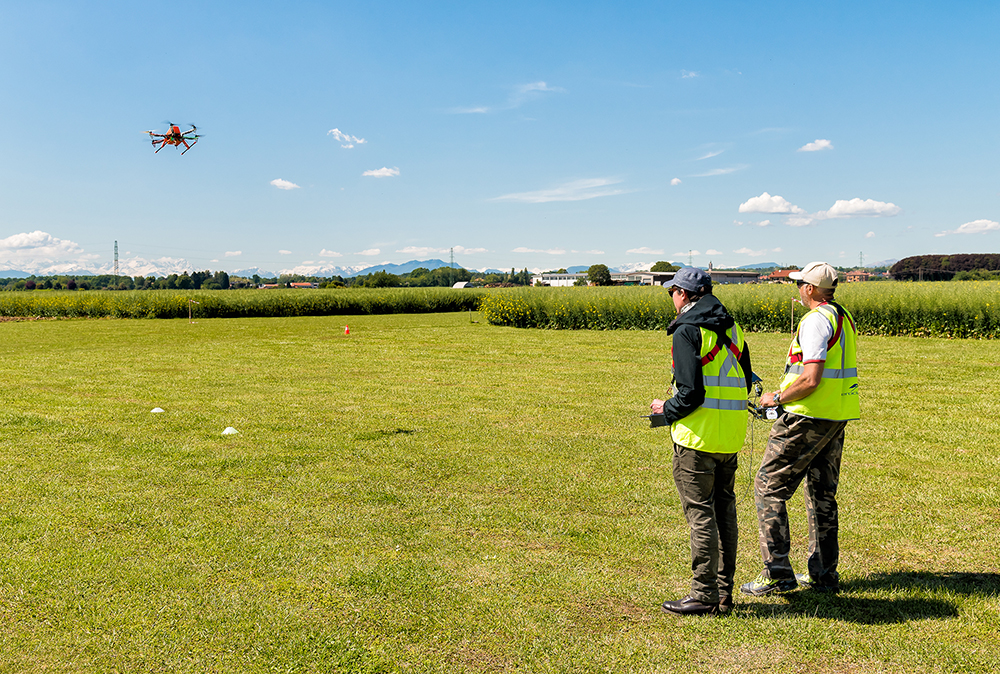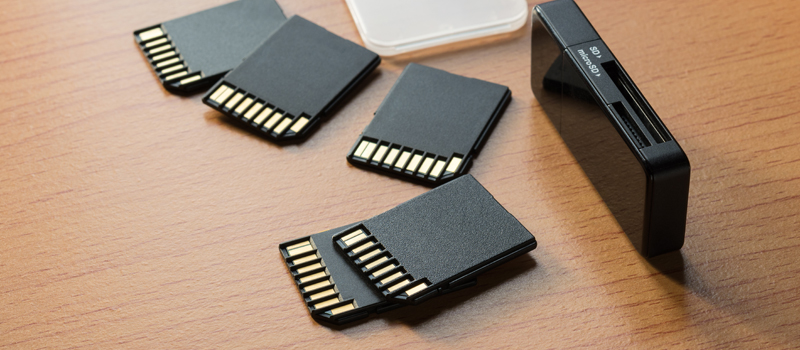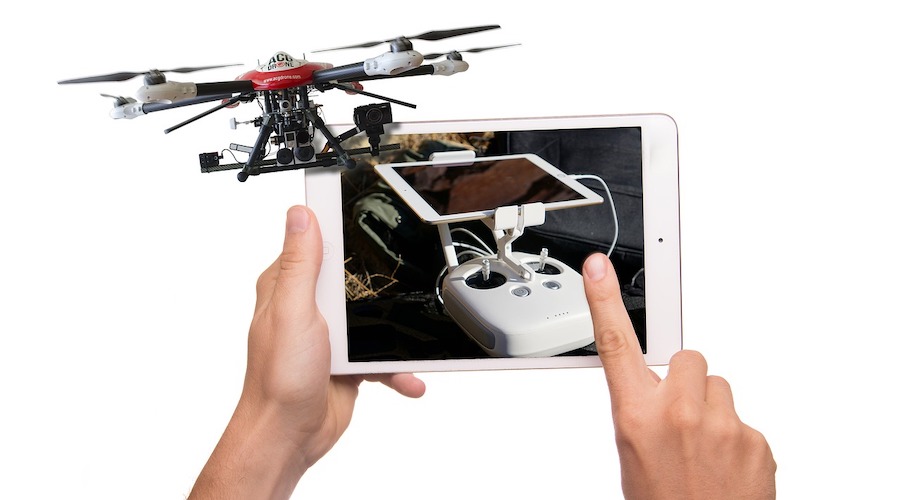-
When is a visual observer necessary?
-
Are visual observers needed for recreational drone flight?
-
What does Part 107 say about visual observers?
-
Some tips on flying a drone with a visual observer
- 1. Binoculars (and other visual aids) are not allowed for compliance
- 2. You can have more than one visual observer
- 3. Create a common language
- 4. All visual observers must know the standard scanning procedure
- 5. The whole flight crew must know the Part 107 rules
-
Final thoughts
The FAA’s Part 107 rules are pretty much the scripture for professional drone pilots. It outlines what they are allowed to do, the restrictions they have to comply with, and their duties to the FAA. However, there are finer points of the law that warrant further discussion. In this article, we are tackling one of the most important ones – the need for a visual observer.
What is a visual observer and what are their responsibilities? When is one necessary?
When is a visual observer necessary?
As far as the FAA is concerned, a visual observer is a completely optional part of a drone flight crew. Commercial drone operations are not uncommon. The main purpose of a visual observer is to augment the RPIC’s sense of situational awareness, cognizant of the reality that the RPIC can get distracted by people, activities, and other mission-critical operations on the ground.
The visual observer is not meant to fully replace the pilot’s responsibility to maintain situational awareness. This means that visual line-of-sight still needs to be established by the RPIC in the presence of a visual observer, even if intermittent breaks are needed. This also means that the drone cannot be allowed to fly too far away for the RPIC to see. Forming a “daisy chain” of visual observers to stretch the scope of visual line-of-sight is expressly prohibited.
There is one scenario where a visual observer is absolutely necessary – when the RPIC is flying completely via FPV. This means that the RPIC relies completely on the live video feed of the drone’s onboard to determine its location, attitude, and direction of flight. While this can be useful for certain professional uses, it also greatly diminishes the RPIC’s situational awareness. For such cases, the RPIC must have a visual observer who will be responsible for monitoring the drone’s surroundings and communicating to the RPIC if there are any nearby hazards.

Are visual observers needed for recreational drone flight?
The FAA Reauthorization Act of 2018 provides guidelines for recreational drone flight or any drone operations that do not generate profits or aid a business. Part of these rules is for recreational pilots to keep their drones within visual line-of-sight, just like commercial drone pilots.
If needed, a recreational drone pilot may also fly with a visual observer to comply with the rules on visual line-of-sight. There is a bit of difference in how this rule was stated for recreational drone pilots. According to the rule, the pilot must be co-located and in direct communication with the drone pilot. This seems to discourage the use of walkie-talkies – something that professional drone flight crew seem to resort to quite commonly.
That said, flying with visual observers is still only an option for recreational drone pilots. It’s not necessary but is highly encouraged in certain situations.
What does Part 107 say about visual observers?
There are two provisions we need to read up on to better define the FAA’s requirements when it comes to visual observers. The need for a visual observer is outlined in Section 107.31, titled “Visual line of sight aircraft operation.” The actual text of 107.31 is too long for this discussion so we are paring it down only to the relevant parts.
Section 107.31 requires that the “remote pilot in command and the person manipulating the flight control of the small unmanned aircraft system must be able to see the unmanned aircraft throughout the entire flight.” This establishes the need for visual line-of-sight for drone pilots, which allows them to see the drone’s location, attitude, and direction of flight while simultaneously scanning the skies for potential hazards.
However, Section 107.31 also allows for visual line-of-sight to be established by a person other than the RPIC – the visual observer. In a way, the visual observer can act the proxy of the RPIC so that at least one person in the flight crew maintains visual line-of-sight with the drone at all times.
Section 107.33 goes into further detail about the responsibilities of a visual observer. There’s nothing unusual about the responsibilities, as they are merely an extension of the visual line-of-sight duties of the RPIC. In a nutshell, the visual observer must be able to see the drone and scan its surroundings for potential collision hazards. The rule also outlines how the visual observer and the RPIC must be able to readily communicate with each other.
Some tips on flying a drone with a visual observer
For most drone pilots, flying with a visual observer will be their first foray into operating a drone with an actual flight crew. Developing the necessary dynamics to work together well takes time and practice. However, it helps to start off on the right foot. Before flying with a visual observer, here are a few tips to keep in mind.
1. Binoculars (and other visual aids) are not allowed for compliance
According to the Part 107 rules, visual line-of-sight must be established by the drone pilot or visual observer without the use of tools that enhance vision. This means that you cannot fly a drone to a distance that you can only see only if you used binoculars.
However, having binoculars on hand may still be a good call just in case you have incidences of a drone flyaway. Ideally, drone flyaways should not happen but it’s still good to be ready.
2. You can have more than one visual observer
Flight crews that have more than one visual observer are quite common, especially for large-scale operations that have more than one drone. Even if you’re just flying a single drone, having a visual observer keep an eye on the drone while another scans the surroundings might still turn out handy. After all, even visual observers have limited attention spans and are still prone to get distracted.
3. Create a common language
When you’re out in the field, communications must be kept quick, short, and deliberate. Commercial drone operations isn’t the time for idle chat. Before an RPIC and visual observer can work together well, they must develop a common language. Does the visual observer report collision hazards relative to their position or that of the RPIC? Do they have a common understanding of which hazards a suspension of the operations or, at the very least, an evasive maneuver by the RPIC?
This is the sort of stuff that a flight crew must agree on before the drone even takes off. However, a rookie flight crew will inevitably miss a few things on their first few operations. With a little bit of experience, an RPIC-visual observer team will better understand each other.
4. All visual observers must know the standard scanning procedure
While there’s a standard scanning procedure that most aircraft pilots use when checking for airborne hazards, you don’t actually need to follow anyone’s procedure. Your RPIC-visual observer team is free to come up with your own scanning procedure, as long as it is developed with the intention of providing a comprehensive view of the drone’s surroundings. Also, keep in mind that the scanning procedure must be quick, so it’s best to keep it efficient and straightforward.
5. The whole flight crew must know the Part 107 rules
A visual observer who does not know the Part 107 rules would simply be a case of the blind leading the blind. Since the RPIC relies heavily on the senses and the decision-making faculties of the visual observer, they must also know the rules that commercial drone pilots need to follow.
Part 107 does not require that the visual observer also be Part 107-licensed, although this would make things so much simpler. Knowledge of the basic flight restrictions and fundamentals of drone flight will do. What is more important is that the visual observer maintains focus on the drone – absolutely no distractions!
Keep in mind that flying with a visual observer is no excuse for the RPIC to fly recklessly. Ultimately, everything that happens over the course of drone operation is still the responsibility of the RPIC. Although a visual observer enhances situational awareness, the RPIC is still expected to maintain a certain level of situational awareness regardless of any distraction on the ground.
Final thoughts
Until such time when more sophisticated drone technology has been developed, the factor that determines the range at which drones can fly is the extent of visual line-of-sight. This means that drone pilots are only allowed to fly their drones up to a distance where they can still see the drone’s attitude, position, and direction of flight by unaided visual observation. To help comply with this rule, drone pilots can opt to fly with a visual observer.
A visual observer may not always be a necessity but flying with one is a highly encouraged practice. Just keep in that flying with a visual observer does not absolve the RPIC of any responsibilities when it comes to drone-related accidents. With constant communication and a focus on safety, there should be very little reason for visual observer-aided drone operations to go wrong.




